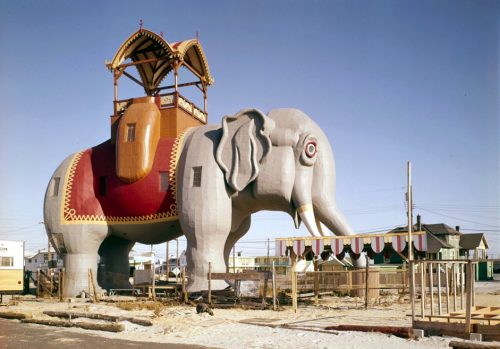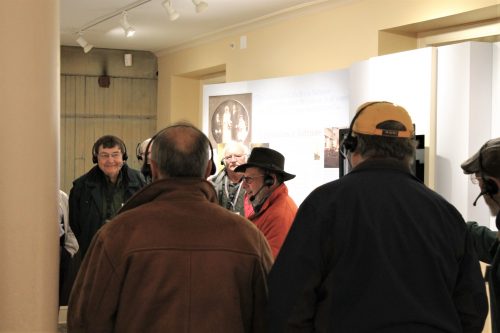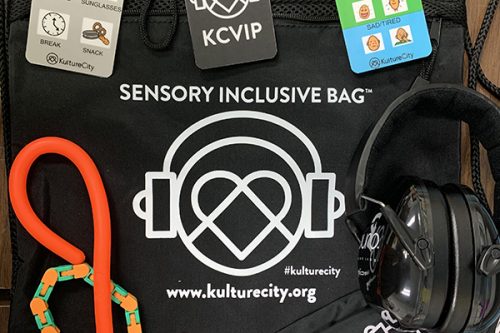Being Welcoming is Much More than Saying Hello

From Visitor Services Coordinator Talia Makowsky. To read more posts from Talia, click here.
Museums are always my favorite places to visit. Wherever I travel, they’re one of the go-to attractions I look up ahead of time when I plan my trip. Growing up, my parents took my brother and I on regular trips to different kinds of museums and similar educational institutions, which make up some of my favorite childhood memories. I recall playing with water features in COSI, or the Center of Science and Industry in Ohio, wandering the halls at the Metropolitan Museum of Art, and even climbing to the top of a giant elephant that used to serve as a hotel in New Jersey.

Having the opportunity to visit these places, and parents who had the means to provide and actively encouraged creative learning, helped shape who I am today. For me, these institutions have shown me new ways to experience culture, science, and history, and have widened my world view.
However, not everyone feels welcome at museums. This happens for a lot of reasons. The space may not be fully accessible for a person with limited mobility. The signs may be written in a language that isn’t native to a guest. Someone may get overwhelmed by sensory-heavy elements in an exhibit, such as noise or videos. The stories in a museum may not reflect a person’s identity, making them feel left out.
Regardless of the reason, I see it as my personal responsibility to try and make JMM as welcoming to as many people as possible. Working as the Visitor Services Coordinator, I’ve learned a lot about our current audience and their needs, and I’m researching new ways to accommodate even more people at our site. This work of inclusion is an on-going project that will never be finished, but as I think about this next year at JMM, I plan to make it my priority, and I know it’s a priority of the Museum staff, as we work to connect people to Jewish experiences and Marlyland’s Jewish community to its roots.
It’s a daunting goal, to make the Museum even more inclusive and welcoming, but I find inspiration from Pirkei Avot, a Jewish text that is generally referred to as “the ethics of the fathers”. There’s a famous line of wisdom that says, “You are not obligated to complete the work, but neither are you free to desist from it (2:21).” Throughout my life as a Jewish person, I’ve come back to that line as a guide, especially as I tried to find my purpose as an adult. It’s led me to the work I do today, even at the Museum, and I wanted to share some of that work with you.
As I mentioned in a previous blog post, the Museum has acquired Assistive Listening Devices or ALDs to use on guided tours. These devices allow a docent to transmit their voice and those on the tour can speak through them as well. The ALDs are a useful tool for people with hearing loss or who are Hard-of-Hearing, but they can be used by anyone. They make it easy for our docents to speak to a large group of people and are great for people who want to wander our exhibits while still listening to the guide. It’s been rewarding hearing the feedback from our guests and our docents, about how the devices are helping to enhance their tours.

Learning is a big part of becoming a more accessible site. Paige Woodhouse, our School Program Coordinator, found a webinar through the American Association for State and Local History, or AASLH, called “Increasing Accessibility and Inclusion at Community Organizations”. We’ve only completed the first of the two-part webinar, but it led to Paige and I discussing how we can make it easier for neurodiverse people to visit the Museum, such as people with autism spectrum disorders. Some resources we’ve seen at other institutions are sensory bags which are kits filled with different tools such as fidget toys and noise-cancelling headphones. A family can check this back out at the front desk, to use during their visit to help a child who may be sensitive to sounds or needs a distraction while waiting in line. Another resource is social stories, which are documents that give helpful information about visiting, wait times, loud spaces or quiet spaces.

We hope to create similar resources at the Museum soon, which we’ll announce as we add them. We also want to create a language directory of our docents, to better provide tours to people for whom English is a second language, and we’re continuing our work with Keshet to provide more inclusion to the LGBTQ+ and Jewish community. Of course, there’s always room for improvement as learn more about our audiences and new tools that are being created every day. If you ever have a suggestion that would improve your visit to the Museum, please reach out to me at tmakowsky@jewishmuseummd.org or (443) 873-5164.
